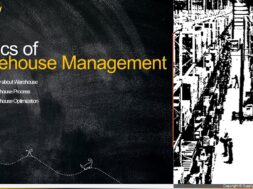
Warehouse Optimization – A COMPETITIVE EDGE in Supply Chain!
Warehousing and Logistics are two key levers and enablers within Supply Chain. To describe each one of them in a single word, I would use the verb ‘Store’ to describe Warehousing and ‘Move’ to describe Logistics. Supply chain will cease to perform without these key verbs (Store and Move) since products have to move through multiple nodes of the supply chain to undergo the transformation from raw material to final product and then move through different distribution channels to multiple channel partners before it reaches the customer. Logistics Management is all about this journey to ensure that the journey happens on time and happens efficiently; Storage (Warehousing) gives the opportunity for consolidation and gives you much needed control to have enhanced service levels.
KANO MODEL IS GETTING SKEWED DAY BY DAY
Customer Expectations keep pushing us to our limits. To explain through a KANO model – most of the past Wow moments through ‘Excitement’ factors in KANO model and Performance factors in the model have moved as ‘Basic Needs’ in the KANO Model. I have been doing a lot of KANO models through the years and I can see for the same industry, KANO is getting Skewed a lot due to the above happening.
In this article, I have focused on the warehousing specifically and how it can be the organization’s competitive edge.
Warehousing has just become part of your top company strategy:
Decades before, Warehousing is never even part of the company strategy and it always took the back seat. The focus is always on the Manufacturing and the game is all about running your factory efficiently. As years passed by, the competitive edge created by lean manufacturing and other TPS concepts slowly dried down and it has become an even game. With that, Warehousing and Logistics started coming to Limelight.
In a supply chain, Warehousing cost is about 1-2% of the total sales. Efficient supply chains operate at < 1% of warehousing cost to total sales. But there is a huge variation between different organizations. For example, current E-Commerce companies operate at 4-8% of the total sales… Yes, E-Commerce industry was not much worried about this leakage in 2010 but today leadership team from E-Commerce industry is in tremendous pressure to monetize and certainly warehousing costs can’t be left out and I’m sure warehousing and logistics costs are in the top 3 of the priorities.
The lamest argument I have heard is ‘Anyways I can bury this cost in my costing and why I have to invest on any technology or skills here at warehousing? Investment here won’t break even?’ Answer is pretty simple,
(1) current market is so competitive and customers can see all competitive info right on their hand-phones itself and if you are not price competitive, you cease to exist.
(2) We are talking about leakage of 3-4% on total top-line and that’s a huge stake.
Thus, talking about the competitive pricing, healthy bottom line and enhanced service levels, warehousing and logistics have to be part of the core strategy.
WAREHOUSE OPTIMIZATION
There are two main optimization verticals under warehouse optimization.
- Warehouse Resource Optimization
- Warehouse Space Optimization
Warehouse Resource Optimization
Warehouse Resource Optimization is all about the efficiency of the people. There are about 10+ measurements on evaluating the efficiency but all those get consolidated to a single metric called the ‘LPMH’ – Lines per man hour. Efficiency is achieved through eliminating non-value-added activities. There are multiple methods available – Theory of Constraints (TOC), Waste Analysis, Therblig Study, VSM (Value Stream Mapping), GEMBA Study, Spaghetti Map etc… These techniques are used depending on the type of problem/requirement and used as stand-alone or as a combination.
Out of the total value that can be brought-in through warehouse optimization, Resource optimization contributes around 15-30% of the total value addition as bottom-line savings.
Warehouse Space Optimization
In a business language, it’s all about efficiently using each square foot you are paying for.
When your business teams are sweating it out on field building the top line, these space inefficiencies silently eat out huge percentage in bottom-line. Unfortunately, most warehouses operate at around 60% or less in cubic space utilization.
On a positive note, once the warehouse optimization is in radar and the organization starts to drive that, there is a lot of potential to make your warehouses a key strength and edge for you.
Space Optimization can be done on a green field project or on a brown field project or on an existing warehouse.
Warehouse Optimization is not a one-time exercise; it is an activity to be done every Quarter.
Warehouse space optimization is done through,
Concepting (Slotting)
Concepting or Slotting is a technique using which we can evaluate the storage designs and storage structures needed and also used to allocate the products in the right storage zones and bins. To explain it with a simple example, just walk into your kitchen and ask your Mother or Dad whoever is cooking, where are all the spices stored? Where are the pans? Where are the vegetables? Where is the red wine? You would see a specific place for each of them and a specific storage container for each of them.
The same technique is used at a very large scale in the warehouse where there are Millions of products and lakhs of square feet.
There are a lot of software capable of doing concepting / slotting – SAP, C-Plan, Navision, etc. Once you are clear what is needed, we can even develop this model in Excel VBA | Access using SQL.
Comment(1)
Comments are closed.
















Good